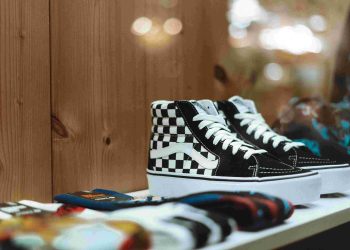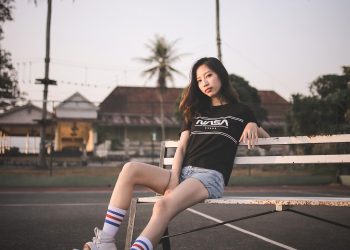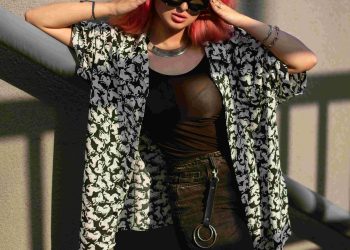Emerging Trends in Fashion Innovation
Fashion is not just a statement; it is a revolution waiting to happen.
As we stand on the precipice of a new era in design and creativity, the traditional fabrics of how we view clothing and personal style are unraveling. Today, innovation in fashion isn’t a luxury—it’s a necessity. In a world where sustainability, technology, and individuality converge, the future of fashion demands bold new approaches. As someone who once struggled to reconcile personal style with fast fashion on a limited budget, I believe that the societal significance of fashion goes far beyond aesthetics. It is a critical lens through which we can analyze our collective priorities and aspirations.

Breaking the Mold: Rethinking Fashion From the Ground Up
The traditional fashion model—a system of seasonal collections, fast production, and fleeting trends—is being challenged like never before. Why should clothing only serve an immediate purpose when it can be a vehicle for self-expression, technological advancement, and environmental responsibility? Today, interdisciplinary efforts combining artificial intelligence, material science, and ethical design principles are questioning established norms. For instance, bioengineered fabrics are enabling the creation of garments that are biodegradable, customizable, and even responsive to environmental stimuli.
Consider this: the same precision algorithms that optimize supply chains in the tech industry are now being used to predict fashion trends with uncanny accuracy. Brands are moving beyond guesswork, utilizing consumer data to create truly personalized designs. This shifts fashion from being industry-driven to consumer-led, echoing the broader societal trend of individual empowerment.
Sustainability: From a Buzzword to a Baseline
The environmental impact of fashion has reached an unsustainable apex. According to the United Nations, the fashion industry is responsible for 10% of global carbon emissions—a percentage that outstrips aviation. This isn’t just shocking; it’s unsustainable. The innovators in fashion are now striving not merely to ‘do less harm,’ but to actively repair the harm done. Sustainable fashion practices like upcycling, rental platforms, and circular economy business models are becoming more prevalent, laying the groundwork for a new chapter in responsible consumption.
To put it bluntly, our choices as consumers matter. When we opt for timeless over trendy, we vote for sustainability over wastefulness. Yet this shift requires more than individual responsibility; it demands system-wide change. Emerging platforms like Rent the Runway and Poshmark highlight this shift, normalizing the sharing and resale of clothing rather than the constant churn of new purchases.
The Role of Technology: AI and Smart Textiles
Imagine wearing a jacket that cools you down in the summer or warms you in the winter, powered by solar energy demands. Smart textiles, embedded with sensors and capable of data collection, are at the forefront of technological innovation within fashion. From fitness trackers integrated into workout clothes to self-cleaning fabrics, the possibilities are endless.
Artificial intelligence is also transforming how we approach design and production. Tools like 3D printing allow for waste-free, customizable garments. Virtual try-ons, powered by augmented reality, are reducing the need for in-store visits and unnecessary returns. As these technologies grow more sophisticated, they promise to make fashion not only more accessible but also more inclusive, catering to diverse tastes and needs around the globe.
The Psychological Component: Why What We Wear Matters
Fashion is often dismissed as trivial or superficial, but psychology tells us that what we wear significantly impacts how we think and feel. The concept of “enclothed cognition” suggests that the clothing we choose affects our psychological processes. In this light, fashion becomes a tool not merely for expression but for empowerment. Choosing to wear ethically produced or innovative garments can instill a sense of responsibility and pride in consumers, facilitating a broader cultural shift toward mindfulness.
This leads us to a profound realization: clothing is not just fabric; it is psychology, philosophy, and identity woven into a single narrative. How we choose to dress sends a signal—not only about who we are but about the world we hope to create.
Practical Recommendations for the Future Savvy Consumer
- Invest in quality over quantity. Choose timeless, versatile pieces that will last.
- Support brands that prioritize sustainability and fair labor practices.
- Experiment with renting or sharing clothing rather than buying new items.
- Educate yourself about garment care to extend the life of your clothing.
- Embrace technological tools like virtual fitting rooms to make smarter purchasing decisions.
Q&A: Popular Questions About Fashion Innovation
1. Which technologies are having the biggest impact on fashion innovation?
Technologies like AI-driven design tools, 3D printing, smart textiles, and augmented reality are revolutionizing the industry. These innovations impact everything from customization to sustainability.
2. Is sustainable fashion affordable?
While sustainable fashion may sometimes come with a higher upfront cost, its longevity and reduced environmental impact make it a worthwhile investment. Additionally, platforms for clothing resale and renting offer affordable alternatives.
3. What role does personal responsibility play in fashion innovation?
Individual choices drive demand for sustainable and innovative products. By supporting eco-conscious brands and opting for smarter consumption habits, consumers play a pivotal role in the industry’s transformation.
Conclusion: A Vision for the Future
Fashion innovation is more than a fleeting trend; it is a call to action for a better, more sustainable and inclusive future. As we integrate technology, psychology, and ethics into the fabric of fashion, we are not only redefining styles but also rewriting the narrative of our cultural identity. The challenge is daunting but not insurmountable. By embracing change and proactively participating in these emerging trends, we position ourselves not as mere consumers but as curators of a brighter, more equitable future.
Ultimately, fashion is about more than how we look; it is about how we choose to live, think, and dream. In aligning innovation with intention, we craft not just clothing, but a legacy.












